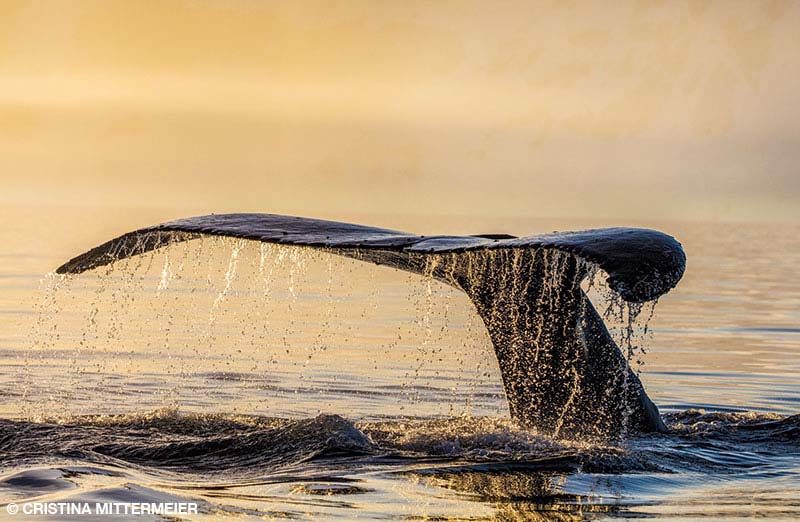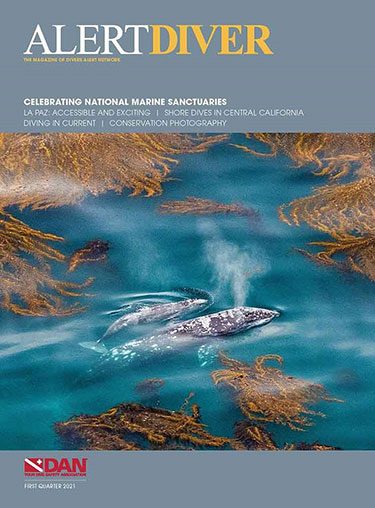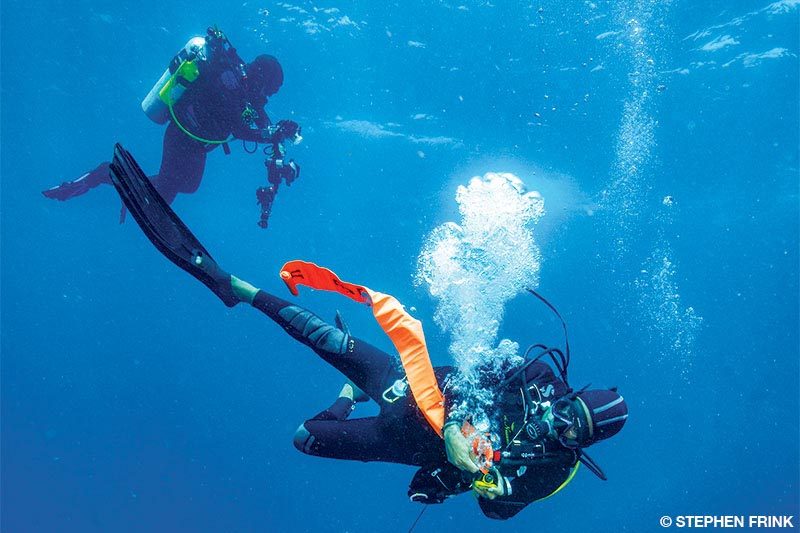Photographer Cristina Mittermeier’s social media posts have insightful captions that reveal her deep commitment to ocean ecology issues. Telling stories that inspire, engage and ultimately motivate action, she wants to show what’s beautiful and special but also what may be in dire peril. Perhaps most significantly, she wants to show her audience an opportunity to act positively and to possibly attain a solution, using her photography to shine a light and make a difference.
Diving in currents can be exhilarating, but it can also be hazardous if you do not have the proper training or are unprepared. To get the most enjoyment, perform proper predive research and dive planning. Make sure you prepare physically and mentally and have the proper gear, training and experience. Divers often say that current dives are some of their most memorable and exhilarating dives.
While on a trip to Tahiti, a 71-year-old experienced diver and competitive rower coughed up foamy blood after making three recreational dives on nitrox. He called DAN for advice and later saw a cardiologist, who diagnosed him with exercise-induced mitral valve prolapse. This diver recommends that divers continue to educate themselves, maintain their DAN membership and insurance coverage, go slowly if they haven’t dived in a while, be prepared and practice for emergencies.
Exercising in water can be a great way to mix up your routine. The water supports your body
and ensures low impact despite intense exercise. The effects of gravity are less profound in the water, so you can have an increased range of motion and move in different directions than on land without falling. Water also offers resistance that activates your core muscles for stability, which is beneficial when maneuvering during diving. An added benefit for divers is practicing comfort and control in the water.
Carefully weigh your return to diving, and assess the risk versus reward. No studies are available that address if the areas of your brain damaged by your stroke will be more susceptible to decompression illness. If you decide to dive, seek a detailed ongoing assessment and approval from your physician. This process should include a neurological evaluation that includes the strength and weakness of major muscle groups and the degree of cerebral injury as well as an assessment and comparison of the left side and right side of your body.
All diving has risks. To mitigate them, we must always pay attention to the details. The predive safety check is of utmost importance to help avoid a dive accident. The key elements are for each buddy to check the other’s BCD, weights, releases and air, and then give a final check and decisive OK. I could have avoided the entire incident had I adhered to my predive safety check and not gotten distracted, and I should have performed the safety check again before getting in the water.
Jens-Christian Meiners, Ph.D., a professor of physics and biophysics at the University of Michigan, focuses his laboratory’s research on mechanics of biological systems, primarily the dynamical properties of DNA and DNA–protein complexes. Meiners and his team are currently working on tissue mechanics and tissue damage through gas bubbles in the spinal cord, or spinal cord decompression sickness (DCS), which won him the 2019 DAN/R.W. “Bill” Hamilton Memorial Dive Medicine Research Grant.
Divers, dive operators and dive professionals must continue to practice good hygiene and disinfection of scuba equipment during the COVID-19 pandemic. Disinfectant products kill microorganisms. When discharged into the environment, they can continue to kill or cause harm until they break down. Disinfecting scuba equipment that contacts the eyes, nose and mouth should be routine for all dive operators. Know the composition of the products you use, and be aware of the potential impacts of disposal.
Make it your standard practice to gently and completely turn on your air. If you’re an instructor, consider not teaching students the quarter-turn back. Dive operations should instruct their staff not to perform the quarter-turn-back practice on customers’ cylinders. Confusing the direction of a handwheel does not happen only to new or inexperienced divers. There have been anecdotal reports of divemasters on busy boats accidentally turning off customers’ cylinders and then performing only a quarter-turn on.
Divers can’t save themselves unless they understand what’s happening and how to evaluate the problem, keep breathing and act. It sounds simple, but the rescue diver course helped me solidify my safety and survival skills. I may not remember every detail, but one item still stands out for me as invaluable for a new diver: Any dive can be stopped at any time, for any reason, without question. To that I would add “and without embarrassment.” That advice would eventually save me.



